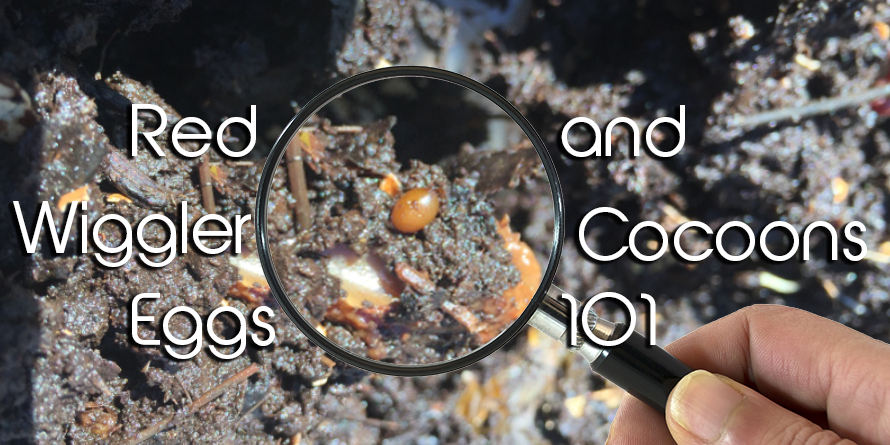Lake Hickory Bait Provides the Tools You Need for a Perfect Lawn
Lake Hickory Bait Provides the Tools You Need for a Perfect Lawn
Blog Article
Red Wigglers 101: Everything You Need to Know for Thriving Gardens
Red wigglers, or Eisenia fetida, play an important function in sustainable horticulture methods, offering as efficient decomposers that transform organic waste into important vermicompost. Comprehending their environment, nutritional choices, and the myriad advantages they supply can change your horticulture strategy (Red Wiggler Express). As these worms prosper in details conditions, their treatment and monitoring are vital for maximizing their payments to dirt health. The question remains: what steps can you require to harness the full capacity of these amazing microorganisms in your own yard?
Understanding Red Wigglers

Red wigglers flourish in environments rich in organic material and moisture. Red Wiggler Express. They have a distinct gastrointestinal system that allows them to process food scraps rapidly, secreting castings that are loaded with crucial nutrients such as nitrogen, phosphorus, and potassium. These spreadings enhance dirt framework, enhance water retention, and foster helpful microbial task, all of which add to durable plant wellness
Moreover, red wigglers can survive in diverse problems, making them adaptable to numerous gardening techniques, including interior and outdoor composting systems. Their capacity to eat big quantities of organic waste everyday placements them as valuable allies for both home gardeners and commercial cultivators. By including red wigglers right into gardening initiatives, one can considerably enhance soil fertility and support sustainable gardening practices.
Suitable Environment for Red Wigglers
Producing an ideal atmosphere for red wigglers is important for maximizing their composting capacities and total wellness. Red wigglers grow in damp, dark, and well-aerated environments, which closely resemble their natural surroundings in ground cover and decaying organic matter. An appropriate environment ought to provide a temperature array between 55 ° F and 77 ° F(13 ° C to 25 ° C), as severe temperature levels can emphasize or harm the worms.
The bed linen material, such as shredded paper, cardboard, or coconut coir, ought to be kept damp but not excessively damp, as excessive dampness can cause anaerobic conditions destructive to worm health. In addition, a pH level between 6.0 and 7.5 is optimal, making sure a balanced atmosphere.
Appropriate aeration is just as vital; it enables for oxygen circulation and prevents the build-up of harmful gases. A container or bin designed for vermicomposting need to have drainage openings to eliminate additional reading excess wetness and advertise air flow. Normal monitoring of these problems is vital for keeping a prospering red wiggler populace, eventually boosting their efficiency in breaking down organic waste and improving garden dirt.
Dietary Needs and Preferences

Red wigglers display specific choices; they are especially keen on softer, decomposing products over harder or even more coarse materials. It is important to stay clear of feeding them citrus peels, onion, and garlic in big quantities, as these can be damaging. Additionally, meat, milk, and oily foods must be omitted, as they can attract insects and develop undesirable smells.
(Hickory NC Worms For Sale)To maintain optimum health, a balanced mix of green and brownish products is suggested. Green materials, such as vegetable scraps, give nitrogen, while brownish materials, like cardboard and dried out leaves, supply carbon. Keeping an eye on the wetness web content and ensuring a regular food supply will further boost their growth and composting capabilities. By satisfying their nutritional needs, gardeners can cultivate a growing population of red wigglers in their garden compost systems.
Advantages of Utilizing Red Wigglers
The exceptional advantages of using red wigglers in horticulture prolong much beyond their function in composting. These versatile microorganisms add significantly to soil wellness, improving nutrition schedule and advertising microbial activity. By aerating the dirt as they tunnel, red wigglers enhance drain and origin infiltration, producing an optimal atmosphere for plant growth.
Additionally, red wigglers are effective recyclers of natural waste, transforming it into nutrient-rich castings that act as an outstanding all-natural plant food. These castings consist of useful microorganisms and necessary nutrients, such as nitrogen, phosphorus, and potassium, which are vital for plant advancement. The slow-moving release of nutrients from worm spreadings makes sure a consistent supply, decreasing the danger of nutrient leaching and promoting lasting gardening techniques.
Using red wigglers fosters a much more sustainable horticulture approach by decreasing reliance on chemical plant foods and advertising a closed-loop system, where waste is transformed right into important sources. Generally, integrating red wigglers into horticulture techniques supplies a multitude of ecological and agricultural advantages.
(Red Wiggler Express)
Composting With Red Wigglers

To start a successful vermicomposting system, select a suitable container with appropriate ventilation and drain. The ideal setting for red wigglers consists of a wet, dark setup with temperatures in between 55 ° F and 77 ° F. Begin by layering shredded paper, cardboard, and food scraps, guaranteeing a balanced mix of carbon and nitrogen-rich products.
Red wigglers flourish on veggie peels, fruit scraps, coffee premises, and eggshells, while avoiding meat, milk, and oily foods that can draw in insects. Routinely check dampness degrees; the bed linens should be moist but not soaked. Harvest worm castings every couple of months by dividing the worms from the garden compost, which can after that be made use of straight in yards or stored for later use.
Executing vermicomposting not only lowers landfill waste yet also enhances garden soil, advertising healthy plant development and lasting gardening methods. Welcome this environmentally friendly approach to improve your horticulture undertakings.
Conclusion
In summary, red wigglers are vital microorganisms for enhancing yard performance through reliable composting. By using red wigglers, gardeners can considerably enhance soil high quality and nutrient availability, cultivating healthier plant development.
Report this page